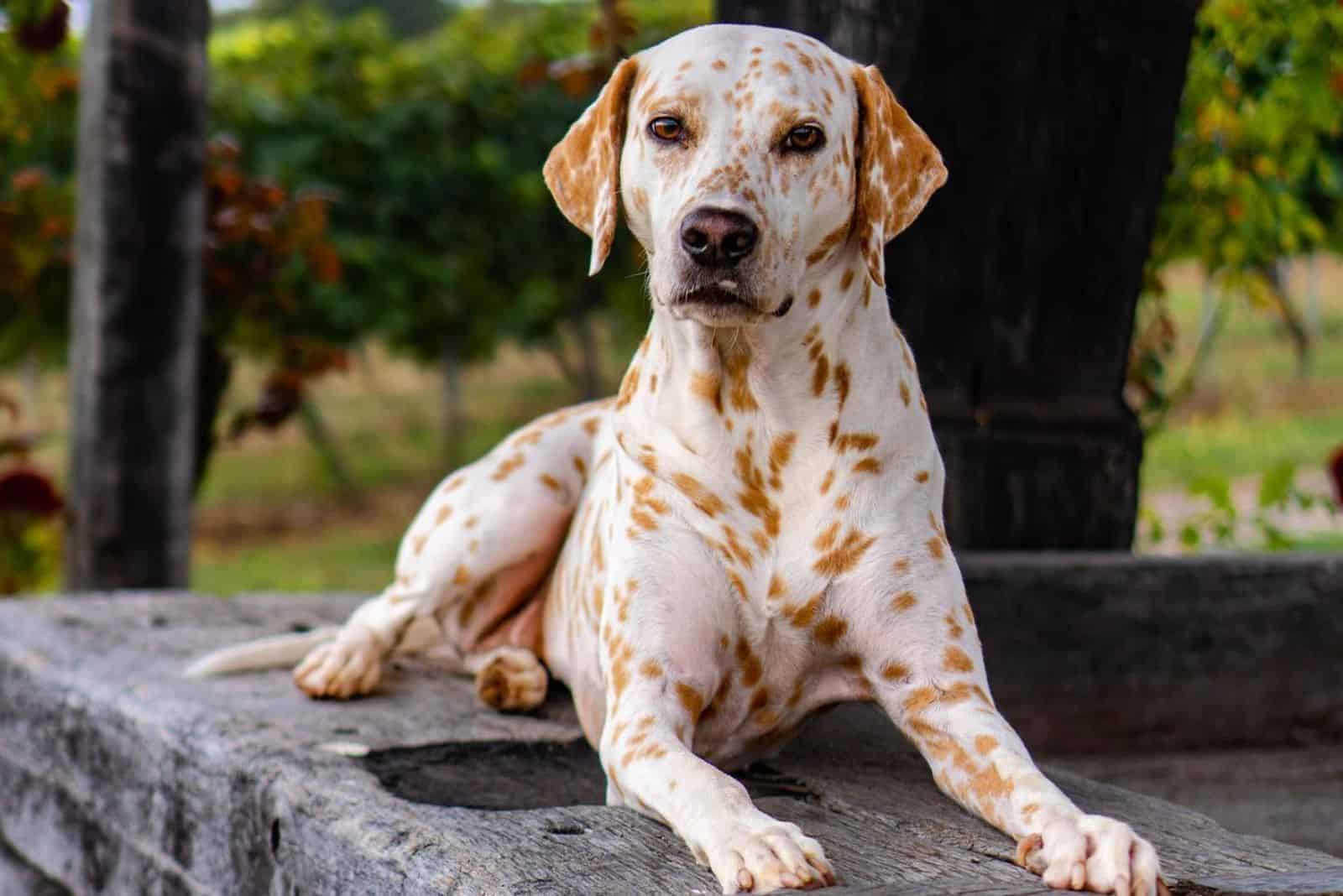Dalmatians, with their white fur and black spots, are one of the most popular dog breeds worldwide, but have you ever seen a lemon Dalmatian?
The reason for his yellow spots on his white fur is a lack of a gene that produces black spots, which make the breed recognisable, but it is the same dog, only in a different “suit”.
If you would like to welcome this beauty into your family, know that your future “vanilla” friend is special, even if it cannot participate in dog shows because it is characterized as a deviation from the standard.
In our article, we’ll discover if this lack of pigmentation influences other characteristics of the breed such as the coat type, height, weight, health, personality… we’ll travel to their origins, and we’ll see why lemon spotted Dalmatians are so different.
Breed Origins
A Dalmatian is a dog breed named after the beautiful Adriatic coastal region of Dalmatia, Croatia, its first definite home. The origins of the breed are unknown, but legend says this breed was traveling with the Romany gypsies.
Always surrounded by his human pack, he developed his character and became an active dog, fond of society, resistant, and long-lived. He was laying by the fire that nomads lit, heating his short fur and enjoying dances, but he never imagined that one day, he’d be famous.
According to the FCI (Federation Cynologique Internationale), the Dalmatian originates from the eastern Mediterranean region.
Genetic Mutation – A Culprit For The Yellow Spots
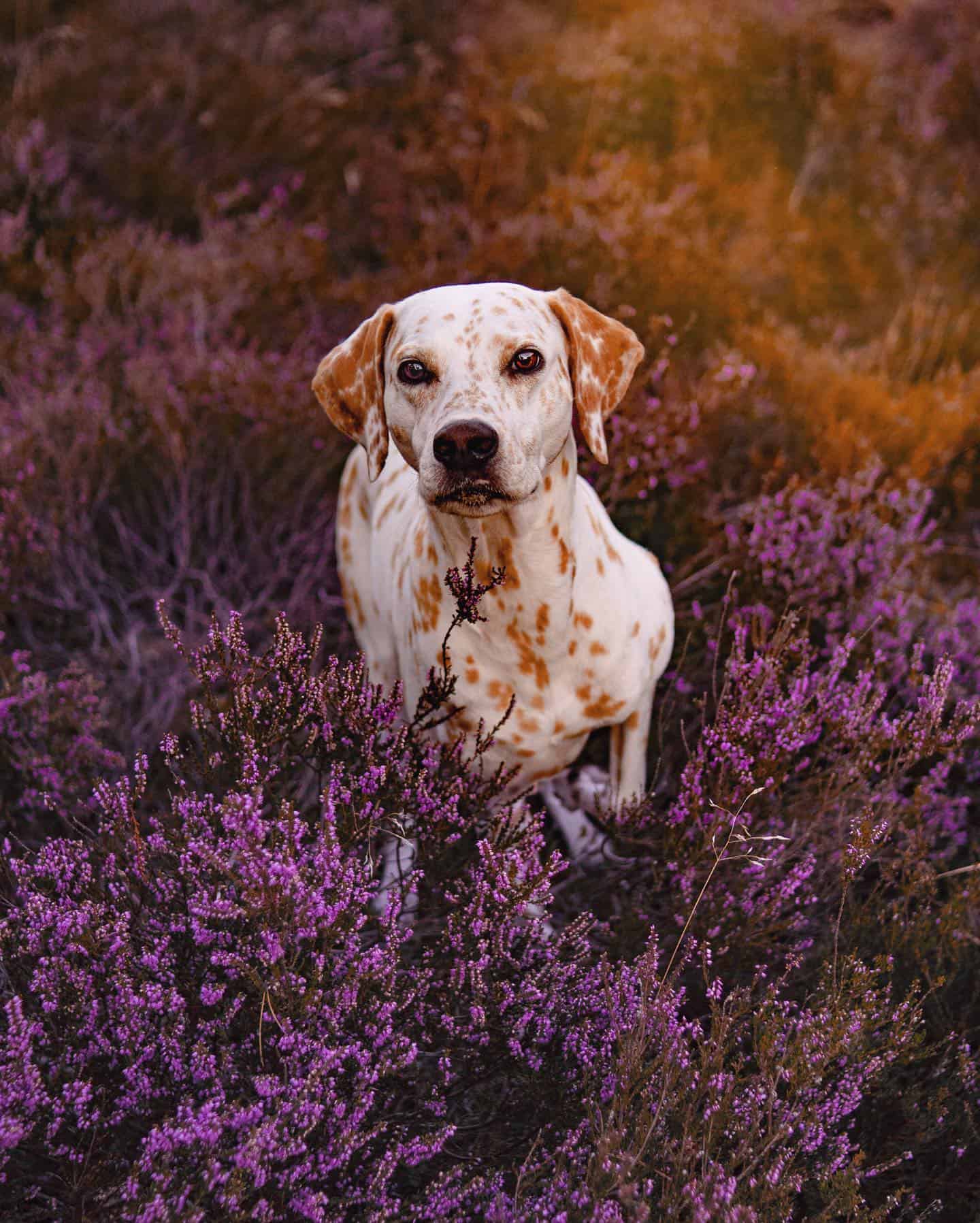
Photo from: @gepunktet
So, how did some Dals become “blondies”? Usually black-and-white standard Dalmatians have a gene that’s responsible for the black spots, like melanin in humans.
That gene is called ‘E’, and brown-and-white Dalmatians also have it.
The black or brown Dalmatian would either have the ‘EE’ or ‘Ee’ for coat color.
The recessive gene called ‘e’ blocks the black color gene, and it is dominant for the lemon Dalmatian, giving it an ‘ee’ combination, and yellow spots.
Just as each human has a unique fingerprint, no two Dalmatians have spots at exact positions.
Dalmatian dog breed is always white-based, but spots can vary from lemon, brown, light-brown, liver, and black – the breed standard. The rarest Dalmatian type is the blue Dalmatian, with ink blue spots. Learn more on this topic in our article on Dalmatian colors.
Lemon Dals Cannot Compete In Dog Shows
We are sure that all yellow Dally owners proudly walk with their furry friends, but the lemon color on this breed is considered non-standard by Kennel Clubs, and they cannot be registered for shows.
According to AKC and UKC standards, Dalmatians with recessive genes and lemon spots are considered flawed, just as tricolor and albino Dals.
• The other undesirable traits of Dalmatians, according to Kennel Clubs, are patches, blue or different colored eyes, a kinked tail, and extreme shyness.
• Eye color varies between brown, amber, and blue, with some dogs having one blue eye and one brown eye, or other combinations.
• According to kennels, the only correct nose colors for Dalmatians are black or brown, with the brown nose being present on white and liver Dalmatians, but the FCI states that the nose color should be in accordance with the Dalmatian’s coat color.
Besides their fur color, lemon Dallys are the same as their famous siblings, so let’s get to know this beautiful breed better.
Can A Lemon Dally Be Aggressive?
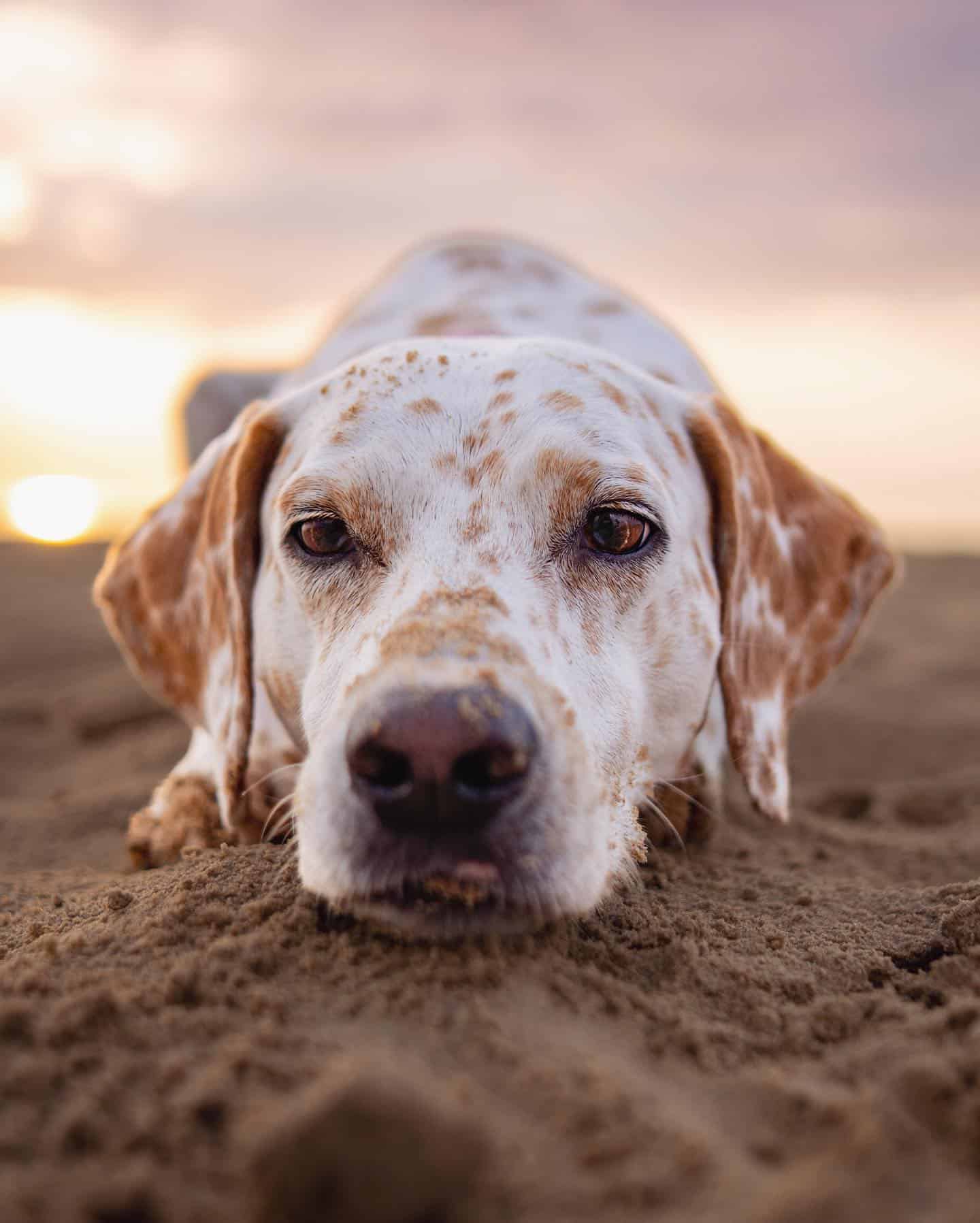
Photo from: @gepunktet
As we said, this breed must be socialized as a puppy in order to know the difference between a comfortable and a threatening environment.
This Dalmatian breed is not known to be a dangerous or aggressive dog breed, but if not socialized properly, when it gets scared or feels threatened, it responds with behavioral problems – aggression, which can be shown through growling, barking, and biting.
The best way is to train it as a part of your family, with a lot of acceptance, from an early age, but if you’ve adopted a dog with behavioral problems, know that obedience training is a good way to get it to calm down.
A professional trainer can help you deal with potential anxiety by identifying its triggers and getting him used to it.
Training And Socialization
Would you like your pet to bark and jump all the time?
Of course not.
Training should start from an early age in order to enforce good behavior and prevent the development of bad habits, such as stubbornness and fear-based aggression.
The Dalmatian is sensitive to harshness, so don’t dare punish him because it won’t forget it. Use a positive approach to training, with lots of praise and rewards for proper behavior, and corrections for bad behaviors if you want a well-trained dog. Be firm, but gentle to keep the trust between you.
Early socialization with other dogs, cats, small pets, children, and adults is imperative. Teach your puppy to come every time you call it, to be calm indoors, to walk on a leash without pulling, and to take everything gently… not grab.
Make him learn what is acceptable and what is a definite NO (i.e., jumping around recklessly, biting hands while eating or playing, disobeying commands, destroying things, barking all the time…).
They are intelligent dogs, happy to learn, so don’t be lazy to teach them as much as possible.
Grooming Requirements
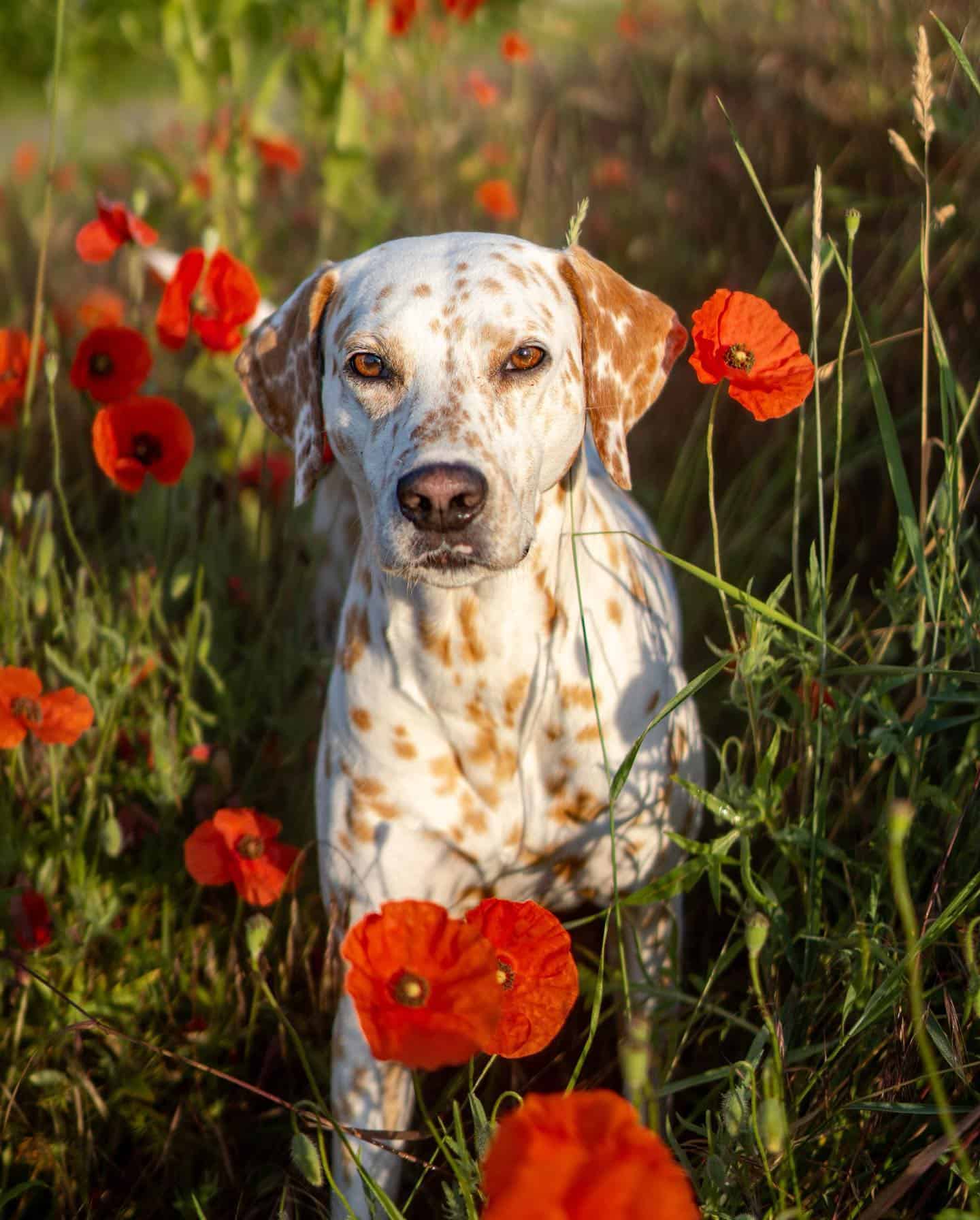
Photo from: @gepunktet
Proper daily grooming, if possible outside, will prevent a lot of dander from lingering in your house, and will also prevent their skin from being dry.
• Brushing the coat with the direction that their hair grows should be done at least three times weekly.
• During autumn and spring, you should brush them once a day and vacuum your home regularly.
• Some Dals have long hair, which needs even more attention.
• A long-haired lemon Dalmatian needs frequent brushing, even when it isn’t shedding heavily.
• It is recommended that you bathe this breed at least once every six weeks.
• Don’t bathe him too often unless he’s covered with mud or some other heavy dirt because it will dry his skin, which will produce more dandruff.
Dals Don’t Like To Be Alone
Dalmatians are very protective, playful, love attention, and are good with kids, but don’t leave them alone without supervision because they are often restless and not aware of their own strength.
His great energy and strong musculature can be too much for a kid, so children should also be properly introduced to the dynamics, and learn that a dog is not a toy, no matter how cute it is.
They like to be included in all family activities, and sleep near their people.
Dalmatians are very people-oriented, they thrive on human companionship, and should not be left alone for more than two to three hours because they will be bored and suffer from separation anxiety. They can even destroy your house in a panic.
Can They Live In A Flat?
A Dal is not the best dogs for people who live in an apartment, but if you can spend a lot of time with him outdoors, it is not a problem.
It would be best if your “Spotty” has a nice size yard to run in because this breed is energetic and needs exercise.
Are You Active? Dalmatians Are Your Perfect Companion!
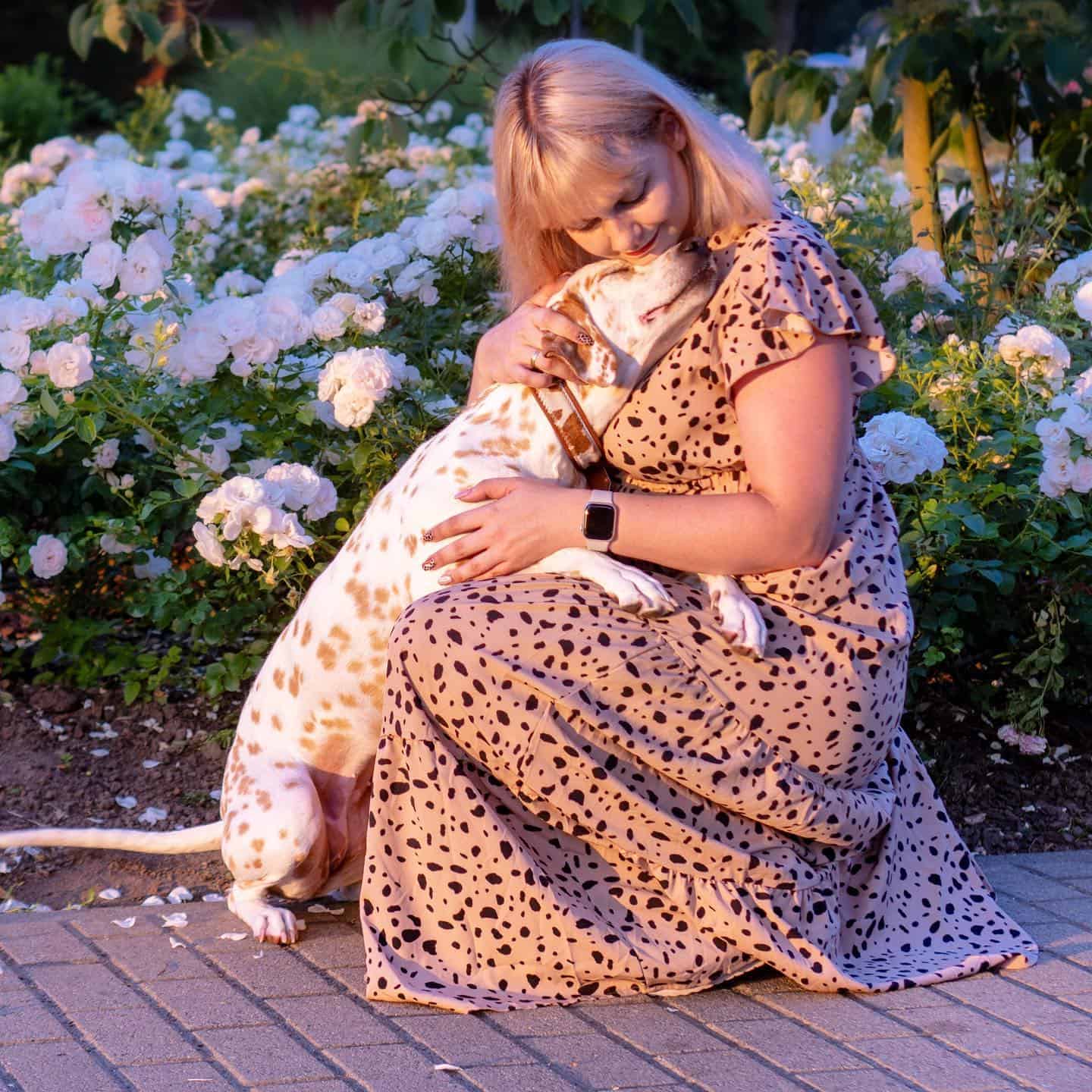
Photo from: @gepunktet
If you like running, biking, swimming, hiking, fetching, or any fast outdoor activity, then the Dally is your perfect playmate because all variations of this breed require at least two hours of exercise.
They’ve played different roles throughout history (guards, shepherds, circus dogs, coaching dogs…), and it is proven that with their high energy level, without sufficient exercise (physical and mental), they become destructive.
Whether you have a puppy or an old dog, both still require light exercise.
Is The Dal A Healthy Breed?
Nobody likes his pet to be ill, and while Dals are usually a very healthy breed, there are some possible problems.
Some of the health issues your Dalmatian can have are:
• Deafness
• Hip dysplasia
• Iris sphincter dysplasia
• Skin allergies
• Atopy – sensitivity to certain allergens like pollen and dust mites
• Epilepsy – a brain disorder which cause seizures
It is always important to maintain its hygiene – brush its teeth, take care of its eyes, trim its nails, and wipe its ears because it can get ear infections often.
Regularly keep up with flea and tick treatments.
One way you can prevent your Dally from developing various diseases is to buy from a reputable breeder recognised by the Kennel Club, which will do a health screening.
What About His Ears?
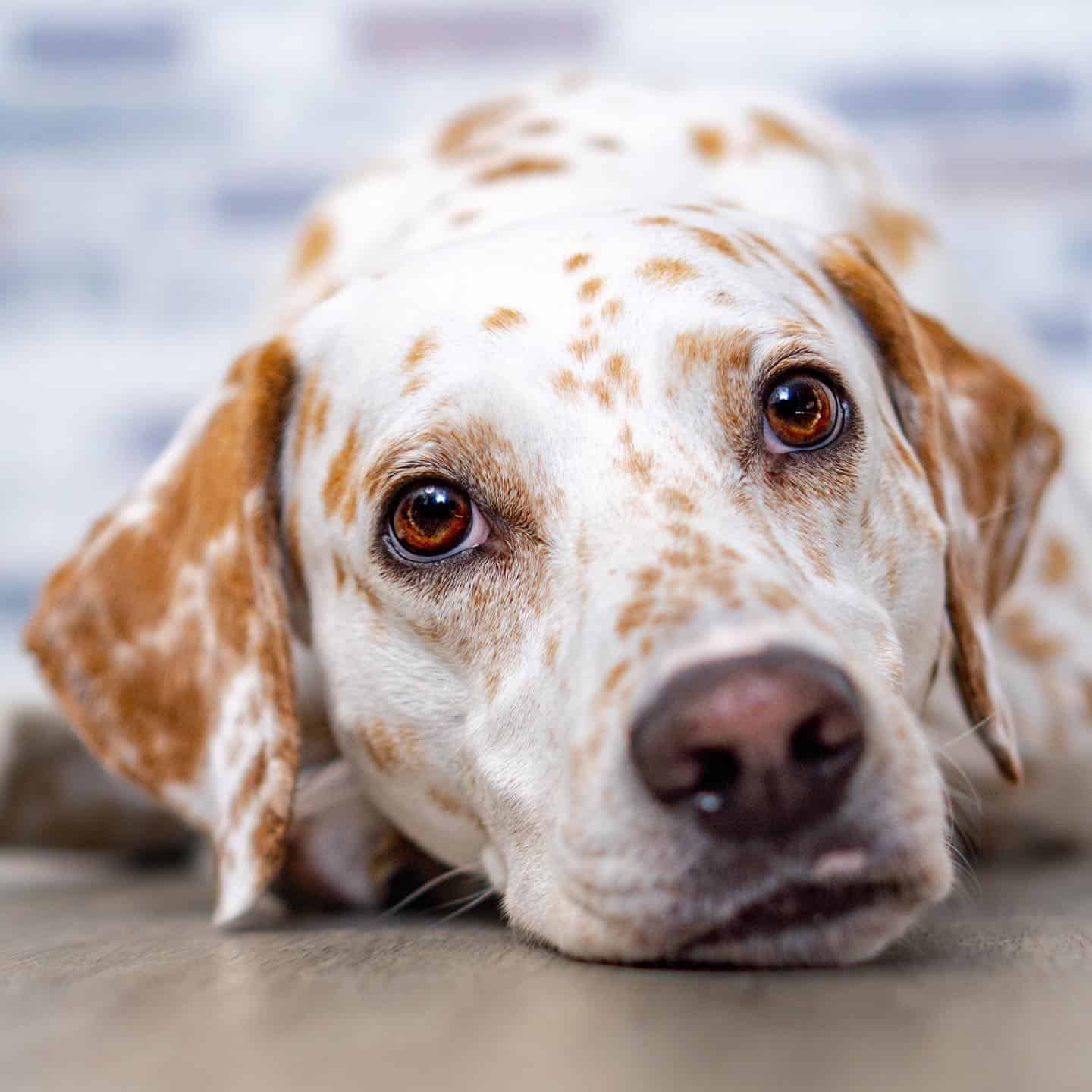
Photo from: @gepunktet
Have you noticed that some Dalmatians ignore their owner when they call them?
Don’t judge them – maybe they are not rude.
Lemon Dalmatians (just as all Dals) are vulnerable to deafness, which is incurable and inherited as a polygenic trait. All Dalmatian bloodlines can pass along deafness to their offspring.
Eight percent of Dalmatians are born with a total loss of hearing while more than twenty percent can’t use one ear.
Genes that make a dog’s coat white-based are responsible for hearing problems in many dogs. The same gene that causes the spots is linked to hearing issues, leading to lack of melanin-producing cells in the ear, which are key for normal ear development and functionality.
Dogs with larger patches of black are less likely to be deaf.
The Dalmatian Club of America recommends euthanizing deaf Dalmatians as they are harder to train, and tend to be more aggressive, but a deaf yellow Dally, or one with any other color, can live a normal life with special treatment.
If you decide to adopt a deaf puppy, adult, or senior, do your research properly, but if you want to avoid buying one that could have deafness in its bloodline, ask the breeder for the medical records of the parents.
Dalmatians Need A Special Diet
If not trained properly, a Dally will try to steal food from your table. Maybe you find this cute, but it is not good for them.
A Dalmatian in growth should never be so skinny that you can see its ribs. But, he also shouldn’t be so fat that he loses his shape.
• You should make a routine of feeding him measured meals twice a day.
• Give him a reward cookie only for good behavior.
• Give him a big bone from time to time in order to clean his teeth.
A Lemon Dally, just as other Dalmatians, lacks enough enzyme to digest protein.
His urinary system is different from other dogs, and more similar with humans and apes – one that’s susceptible to kidney stones.
Stones are especially dangerous in males because they can easily “block” a male’s narrow urinary tract, which can be life-threatening.
That’s the reason why you should limit the amount of protein in its meals.
• Avoid feeding it raw meat, and always give it clean, fresh water.
He should urinate frequently as well, so don’t let him bark around the entrance door, begging you to go out.
What Food Should You Give To Your Dalmatian?
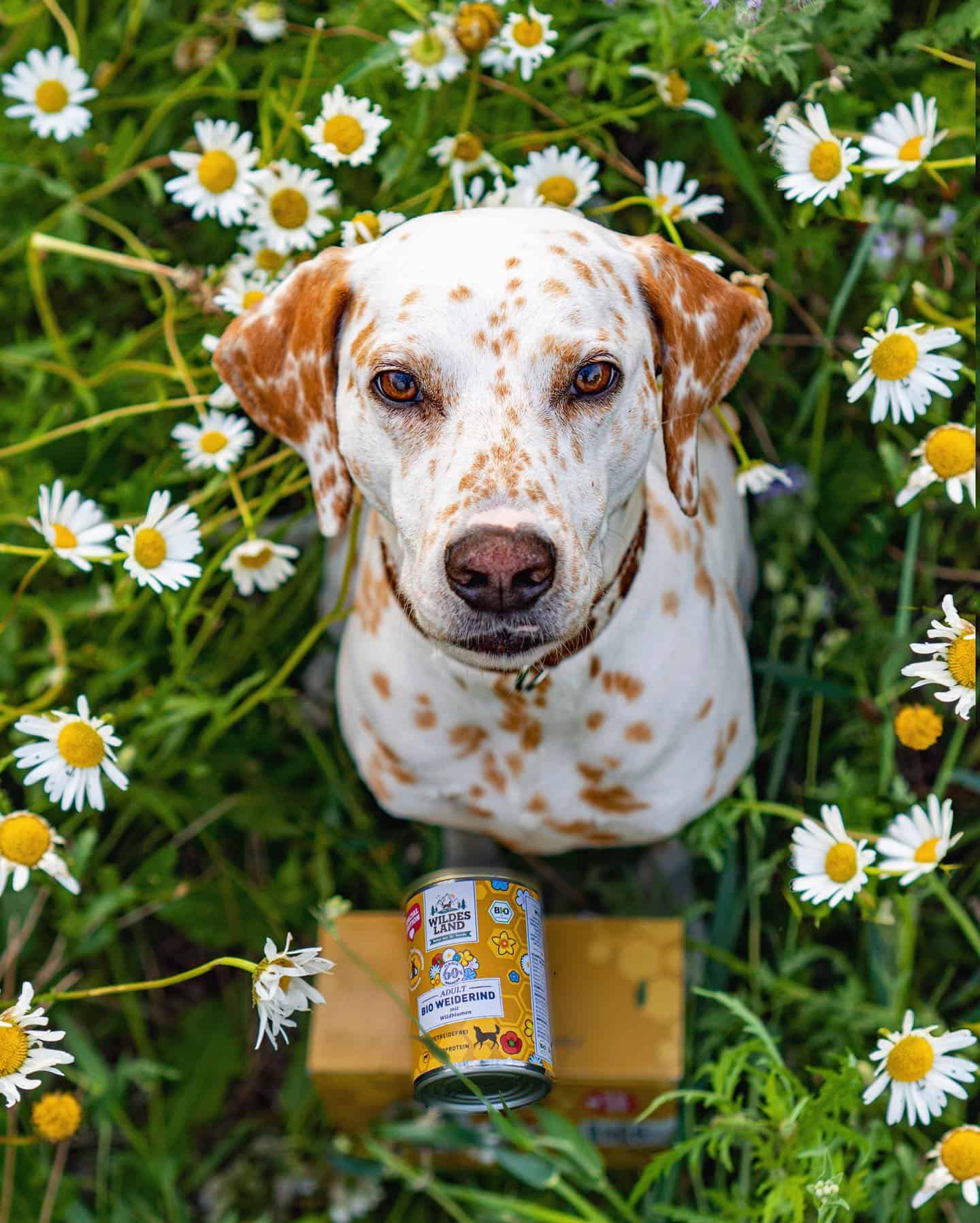
Photo from: @gepunktet
Dalmatians need quality protein to grow and thrive, which means skipping red, raw meat.
• Feed him with low-purine options like chicken, turkey, and fish – protein sources without bones.
• Purine-rich recipes have meat by-products, sardines, mussels, and whole-wheat grains.
• Apples, carrots, hard cheese (Cheddar), and hard-boiled eggs make great low-purine treats and are great for snacks while training your Dalmatian.
Find more advice in our article on the best dog food for Dalmatians, as well as in our Dalmatian feeding chart.
If You Are Allergic, Skip Lemon Dals As A Pet
Three major causes of allergies from pets are their saliva, urine, and dander.
The Dalmatians are house dogs – they don’t drool, and their skin is less oily than, for example, a retriever’s, but it sheds all year, especially during autumn and spring, and the dead fur and its dander is a strong allergen.
So, if your immune system is oversensitive, know that Dallys are not recommended pets for allergic people.
Let’s Sum Up What We’ve Learned
Billions of people have lived on this planet throughout history, mostly in cohabitation with animals. Some of them have thought that animals have a souls, while some have thought that they are only here to serve people.
Whatever the case may be, one thing is for sure – you will live with the results of your behavior toward them. So, make it positive, thoughtful, and full of love and respect for their needs and the small “flaws” that all of us have that make us special.
Even with the “right” or recessive gene, the “wrong” pigmentation – tri-color, albino, lemon, standard, polycolor, or black nose, deaf, active, with potential hip dysplasia, purebred or “second hand”… every dog breed is yours to feed properly, groom regularly, take out enough to satisfy its needs, and make it feel as if it is your family.
He should feel as a part of the pack, even if the pack is not a 101 Dalmatian.
Then, one day, maybe you’ll proudly walk with your lemon Dalmatian and the trophy he has as “the most special of his kind”.
If not… who needs a trophy? It only collects dust.
Frequently Asked Questions
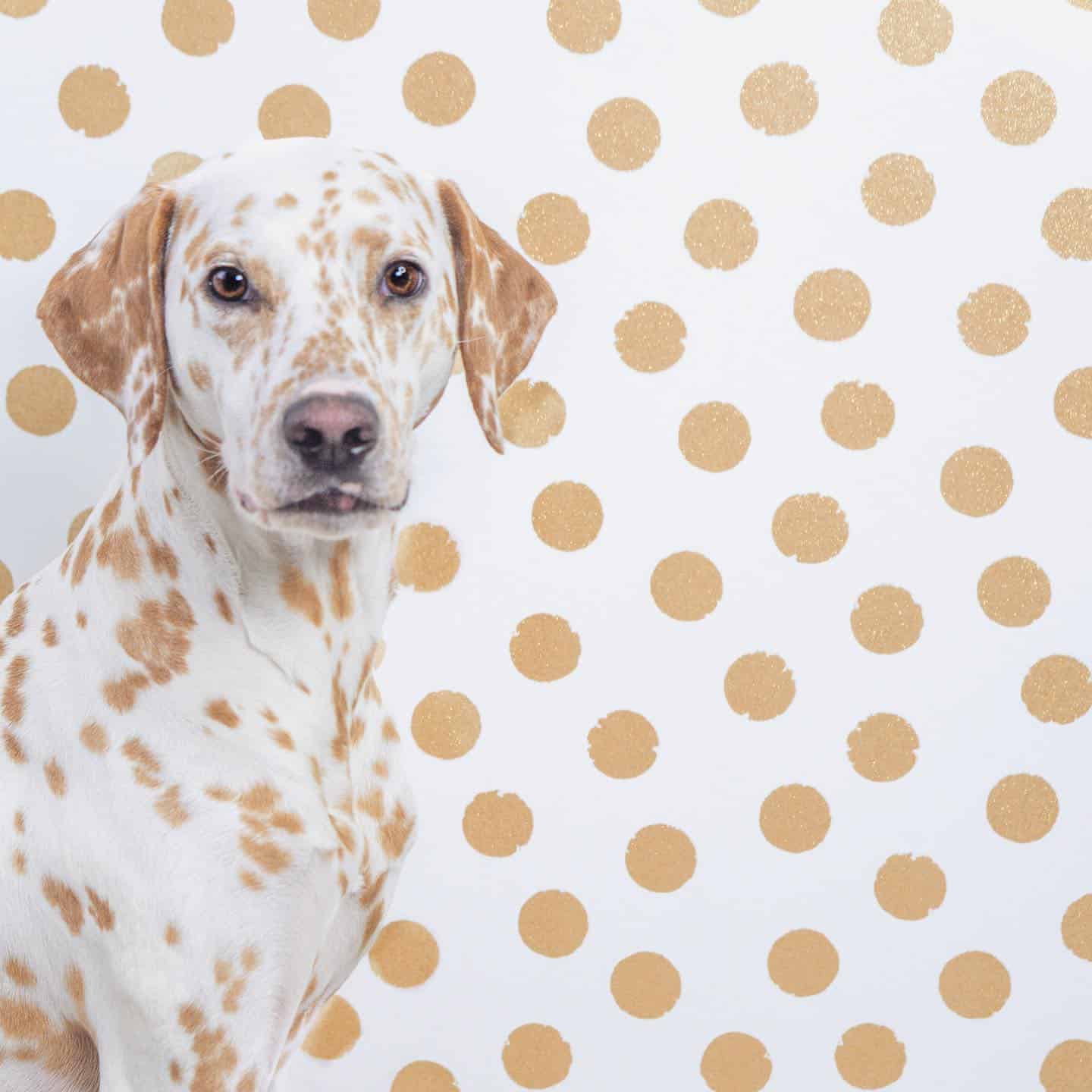
Photo from: @gepunktet
1. Why Are Dalmatians Used As Mascots For Fire Stations?
Fond of horses, Dalmatians were used in England as a coaching dog, running before the horses, alongside the coach or under the coach between the axles, and guarding the horses and coach while resting.
After that, the National Fire Protection Association from the United States recognised their endurance and hired them to run with the horses to a fire, watch over the equipment, and sometimes even rescue people from burning buildings. So, the Dalmatian – Sparky, the Fire Dog, (with black spots) was created for the NFPA in 1951, and this has been the organization’s official mascot ever since.
2. How Do You Train Dalmatian Puppies?
Make sure the routines that your Dalmatian puppy is learning are good ones that lead to good behavior because if he learns bad routines, he will repeat them.
Stick with a good routine for meal time, grooming, play time, bed time, getting up in the morning…, in the same order and with the same words. Be strict with what is acceptable and what is not.
3. Do Dalmatians Like To Swim?
Most Dalmatians love to take a dip in a big pool or swim in a lake. They are great swimmers, but still… keep an eye on them when near water.
4. What Are The Differences Between A Male And A Female Dal?
A male dog is usually a bit taller, heavier, and stronger. Males feel the need to manifest themselves towards other male dogs, but are often very affectionate and loyal towards their own family.
Female dogs go into heat twice a year, and some also have false pregnancies. They may then suffer from mood swings, which makes them not as stable during the entire year as a male dog. Female dogs are usually either friends with everyone or just go their own way.
Read More: A Dog in Heat: What to Expect From a Female Dog After Mating
5. How Many Dalmatian Puppies Can Be Found In One Litter?
Unrelated to pigmentation, Dalmatians usually have litters of six to nine pups, but larger litters of up to 15 puppies are not unusual.
6. How Were Dalmatian Dogs Called Throughout History?
These dogs from Dalmatia are also known as English Coach Dogs, Carriage Dogs, FireHouse Dogs, Pudding Dogs, and the Spotted Dick.
7. Why Are Dalmatian Dogs So Popular?
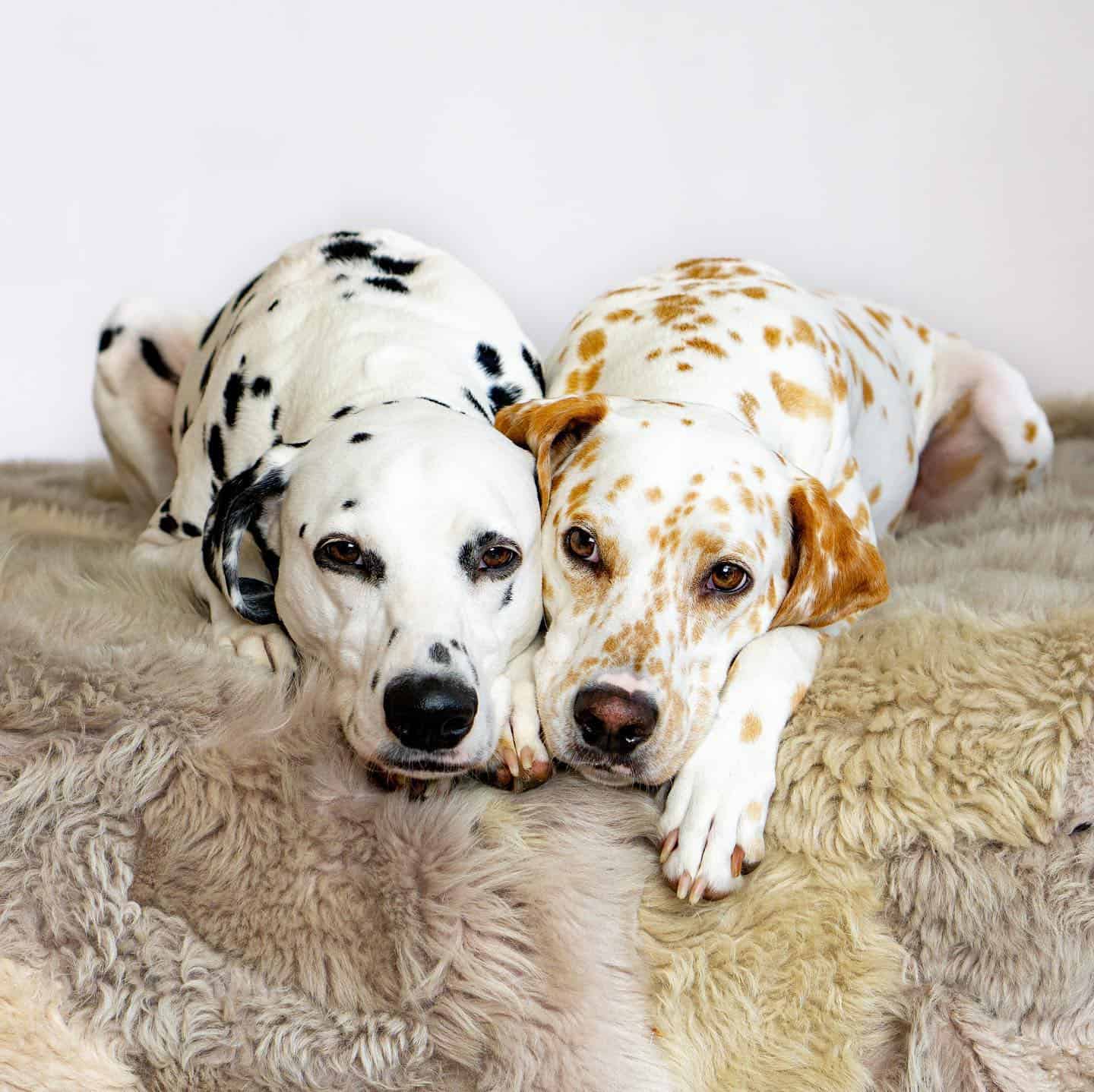
Photo from: @gepunktet
The famous painter, Pablo Picasso, often painted his favorite Dalmatian dog, called Perro (dog).
Also, Disney studio popularized this breed through the movies “101 Dalmatians”, and “102 Dalmatians” (based on the book written by British author, Dodie Smith), and “Cruella”.
Since Hollywood dictates trends, many Dal owners started irresponsible breeding, which produced many dogs with neurotic or hyperactive temperaments.
8. What Should You Know About Dalmatian Puppies?
Lemon Dalmatian puppies are born white, just as all standard Dalmatians and other representatives of the breed are. As they grow, the spots begin to appear after a few weeks, and they continue into adulthood.
The spots should be symmetrically placed all over the body, and clearly defined. The size of the spots should be even, while the spots on the head and on the legs should be proportionally smaller than those on the rest of the body.
Of course, you will love him, despite the size of his spots.
When you choose a puppy for a pet, don’t take the loudest one. Stay a little while in order to meet the whole gang, and then take that one whose energy resonates the best with yours.
Even if they are so cute that you want to spoil them… don’t. They need to be trained from an early age.
9. Where Can I Buy Dalmatian Puppies?
The best option to buy a Dalmatian dog is from a reputable breeder who will never sell their litters in retail stores, but only directly, so they can meet the buyer and be sure that the dog will go to a good home.
Stores do not offer all the background information about the dog’s health and personality. By visiting several breeders, you can judge a puppy based on its parents and on the way the breeder handles his dogs.
Find more information on the price of this dog breed in our article on the Dalmatian cost.
10. Would You Be A Suitable Owner Of A Lemon Dal?
If you would like to buy a Dalmatian, prepare to be the alpha of your pack because this intelligent breed needs a strong hand to establish rules for behavior. You have to be firm, consistent, and able to handle their huge energy level, stubbornness, and daily needs.
The Dalmatian is an intelligent and trainable breed, but it can be stubborn, which makes it certainly not a dog for an inexperienced owner.
Make it clear that you and your family are the leaders in your house, and your Dal is the follower. Dogs love to follow when you are a confident, consistent leader who makes all the decisions.
Read Next: A Corgi Dalmatian Mix – Why You Should (Not) Get This Crossbreed
